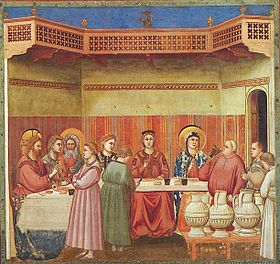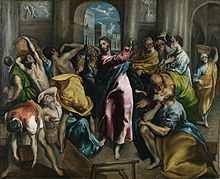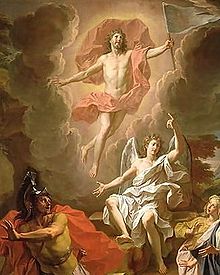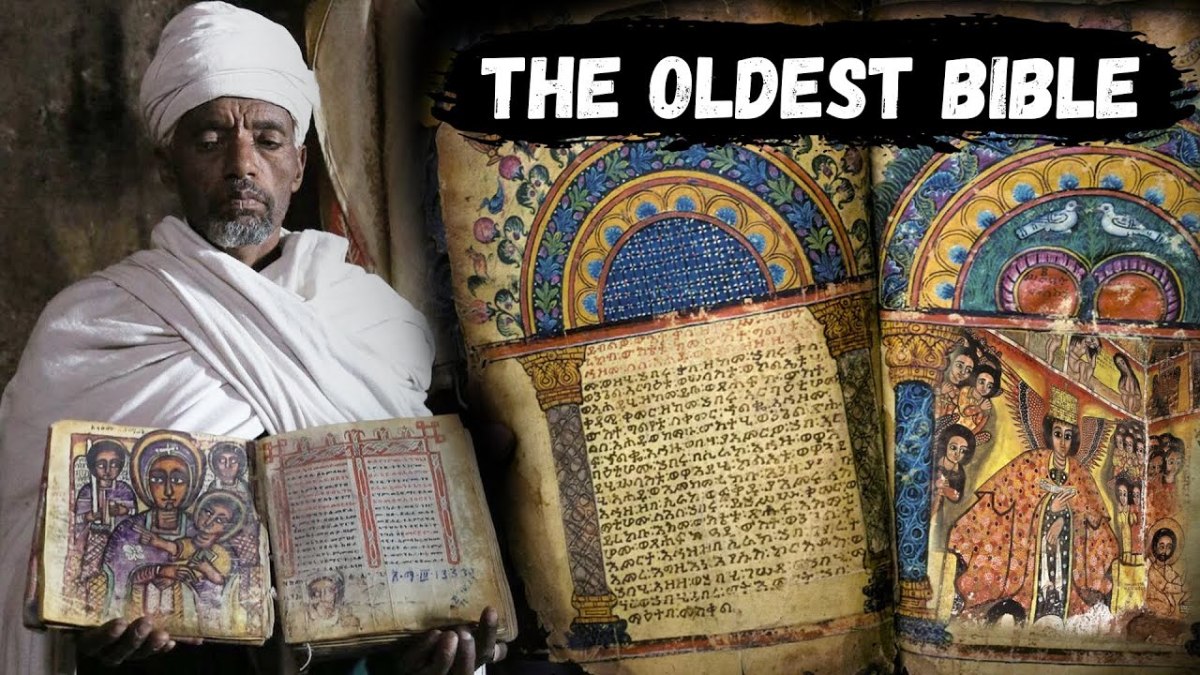Bible: What Does John 2 Teach Us About Jesus' Miracles?
The Apostle John

Water Into Wine

The Wedding at Cana
A third day finds Jesus, Mary (his mother), and the disciples attending a marriage in the village of Cana (vv. 1-2).
When the “master of the feast” runs out of his “good” wine and Mary learns of the need, she informs the Lord; her tone must have implied that she wanted her son to provide wine miraculously.
Jesus’ response appears to indicate some resistance to using His power at this time and for this purpose (vv. 3-4).
Mary wisely leaves the decision in the Lord’s hands, commanding the servants to do what He tells them to do (v. 5).
Jesus orders them to fill six stone water pots with water; their total volume ranges from one hundred twenty to one hundred eighty gallons (vv. 6-7).
[What might the servants have been thinking at this point?
Did they know Who Jesus truly was?]
At Jesus’ behest, the servants take a sample of the product to the master of the feast for a taste test (v. 8).
[If the servants were guffawing as they carried the jug, expecting major embarrassment for Jesus, the outcome soon forced them to change their view.
The “master” tasted the wine (v. 9) and later confessed to the groom that the Lord’s wine was superior to the “good” wine that was offered at the beginning (v. 10).]
John's Authenticating Signs
view quiz statisticsSigns Manifest God's Glory
This miracle constitutes the first of seven “signs” that Jesus performed to “manifest His glory” and to motivate people to put their faith in Him (v. 11; cf. the purpose of miracles done through Moses in Exodus 14:31).
[What does “manifest His glory” mean?
“Glory” appears to be the sum total of God’s attributes in this context.
By immediately turning the water into wine, Jesus exercised His omnipotent sovereignty over creation, thus showing people the greatness of God.]
From Cana, Jesus travels to Capernaum with Mary, His younger brothers, and His disciples for a short stay (v. 12).
[Mention of these actual brothers (not cousins) represents good evidence that Mary gave birth to other children besides Jesus.
Presumably, Joseph has already died.]
Jesus "Cleanses" the Temple

Jesus at the Temple
John records that Jesus went up to Jerusalem—Jerusalem is situated on an elevation—to attend Passover celebration at the temple (v. 13).
While there, He creates controversy by whipping people and their animals out of the outer courts and overturning the tables of moneychangers (vv. 14-15; see Ryrie, New Testament Study Bible, 165 for further details).
Jesus’ single-mindedness about the temple’s purpose—it is the place where God’s people should worship the LORD—motivates Him to rebuke the Jews for making it into a commodities exchange market (v. 16).
[Christ takes the “worshipers’” actions as a personal affront, seeing them as defiling His Father’s dwelling place.]
That the disciples should remember such an obscure Messianic reference as Psalm 69:9 at the time the incident occurs is astounding, unless the verses their rabbis believed alluded to the Messiah were common knowledge among all God-fearing Jews (v. 17; cf. v. 22).
"Temple" Raised On the Third Day

The Resurrection of Christ
Apparently such is the case, for “the Jews”—that is, their leadership—question Jesus’ authority to cause the ruckus, asking Him to show them an authenticating miracle (“sign”) to prove His claim to be the Messiah (v. 18).
Wooden-headed literalists that they are, the Jews misinterpret Jesus’ figurative meaning (vv. 19-20).
As John points out—though at the time he did not know what the Lord was talking about any better than the Jews did—Jesus here refers to the temple of His body that He will raise up in three days, not to the temple building (v. 21).
The apostle makes it clear that the disciples remembered, understood, and believed “the Scripture” and “the word that Jesus had said” only after the Lord’s resurrection (v. 22).
[John separates “the Scripture” from “the word that Jesus had said.”
The former must allude to Psalm 69:9 and the latter to Jesus’ cryptic statement.]
Superficial Belief
view quiz statisticsBelief: True and False
The apostle summarizes some of the results of Jesus’ Passover visit:
(1) People “believed in His name” when they saw the authenticating signs (v. 23); and
(2) Drawing upon His knowledge of mankind’s moral character and spiritual obtuseness, Christ does not “commit” Himself to any individuals (vv. 24-25).
[First, what signs did the people see at the Passover?
The text records that Jesus prophesied about one sign: His resurrection.
Second, how would Jesus “commit” Himself to men?
Bring them into His confidence, share His purpose and plans?
Obviously, the people's "belief" was not of the saving variety, so Jesus would not entrust them with these truths.]
© 2014 glynch1






